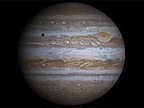You are here
Appendix D - Extra
octan technology
The octan propulsion system emplying Drac bubbles is a type of Inertialess drives, in that it can reduce the inertial mass of a craft to an arbitrarily low value. Inertialess drives have a long history in science fiction. As early as 1928, Edward Smith introduced such a drive (which somehow allowed faster-than-light travel) in "The Skylark of Space" [1]. Inertialess drives have since been employed by a variety of writers, including Robert Heinlein (the light-pressure drive invented by "Slipstick" Libby in Methuselah's Children [2]), Larry Niven (used by the Puppeteers to move their home planet further from its sun in Ringworld [3]), Orson Scott Card (enabling Ender Wiggin to travel vast distances near light speed, aging only a few decades while 3,000 years passed on Earth, in Speaker for the Dead [4]), and Alastair Reynolds (used for propelling a huge alien craft in Pushing Ice [5]).
From a physics standpoint, it is not yet clear whether an inertialess drive is in fact possible. Investigators have proposed interpretations of inertia by which such a drive might be realized. For example, Bernard Haisch and Alfonso Rueda have developed a (highly speculative) theory [6], based on the controversial stochastic electrodynamics [7][8] (a variant of classical electrodynamics), that the lowest energy state of the vacuum, as predicted by quantum mechanics, might provide a physical explanation for the origin of inertia.
Reactionless drives (thrusters not dependent on the expulsion of reactive mass) analogous to the Xam drive are also well established in science fiction. Many authors were apparently inspired by the Dean Drive [1], first patented by Norman Dean in 1959, and popularized by editor John Campbell in the Astounding Science Fiction (later the Analog Science Fiction / Science Fact) magazine. Unfortunately, this drive (and a host of similar drives based on asymmetric mechanical motions) did not actually work.
Writers nonetheless continue to exploit reactionless drives, including Larry Niven (used by the Outsiders in A Gift from Earth [2], and throughout the Known Space book series), Isaac Asimov (the thruster pushes off matter in a parallel universe, thereby conserving momentum, in The Gods Themselves [3]), Arthur C. Clarke (discovered by humans on an alien starship in Rendezvous with Rama [4]), and Stephen Baxter (the Xeelee displacement drive pushes against spacetime itself, in books of the Xeelee Sequence [5]).
Any purported reactionless drive based on strictly classical concepts must violate Newton's third law – "for every action, there is an equal and opposite reaction" – and fail to conserve classical momentum. A true reactionless drive must then rely on non-classical constructs. Various researchers have investigated this possibility. The Xam drive may be most closely related to a proposed quantum vacuum plasma thruster, or Q-thruster, which pushes against virtual particles in the vacuum. Harold Puthoff et al. have published a brief overview of (speculative) potential ways to manipulate the vacuum for space flight [6], though many mainstream scientists consider this research to be pseudoscientific [7].
Note that an effective Q-thruster cannot first make virtual vacuum particles real, then use conventional means to accelerate them. This would require carrying extra mass with a mass-energy equivalent to that of all the created particles, and defeat the purpose of the drive. A useful Q-thruster must instead push against the equivalent mass of the vacuum itself.
REFERENCES__________________________
1. Edward E. Smith, "The Skylark of Space," parts 1-3, Amazing Stories, August-October, 1928.
2. Robert Heinlein, Methuselah's Children (Hicksville, NY: Gnome, 1958).
3. Larry Niven, Ringworld (New York: Ballantine Books, 1970).
4. Orson Scott Card, Speaker for the Dead (New York: Tor Books, 1986).
5. Alastair Reynolds, Pushing Ice (London: Gollancz, 2005).
6. Marcus Chown, "Mass Medium," New Scientist 169, no. 2276 (2001): 22-25.
7. Luis de la Peña and A. M. Cetto, The Quantum Dice: An Introduction to Stochastic Electrodynamics (Dordrecht: Kluwer, 1996).
8. Luis de la Peña, Ana María Cetto, and Andrea Valdés-Hernández, The Emerging Quantum: The Physics Behind Quantum Mechanics (Cham: Springer, 2015).
9. John W. Campbell, "Report on the Dean Drive," Analog Science Fiction / Science Fact 66, no. 1 (1960): 4-7.
10. Larry Niven, A Gift from Earth (New York: Ballantine Books,1968).
11. Isaac Asimov, The Gods Themselves (Garden City, NY: Doubleday, 1972).
12. Arthur C. Clarke, Rendezvous with Rama (London: Gollancz,1973).
13. "Xeelee," Spacebattles Wiki, accessed November, 2014, https://www.spacebattles.wikia.com/wiki/Xeelee.
14. H. E. Puthoff, S. R. Little, and M. Ibison, "Engineering the Zero-Point Field and Polarizable Vacuum For Interstellar Flight," Journal of the British Interplanetary Society 55 (2002): 137-144.
15. Massimo Pigliucci, Nonsense on Stilts: How to Tell Science from Bunk (Chicago: Univ. of Chicago Press, 2010), 90.
